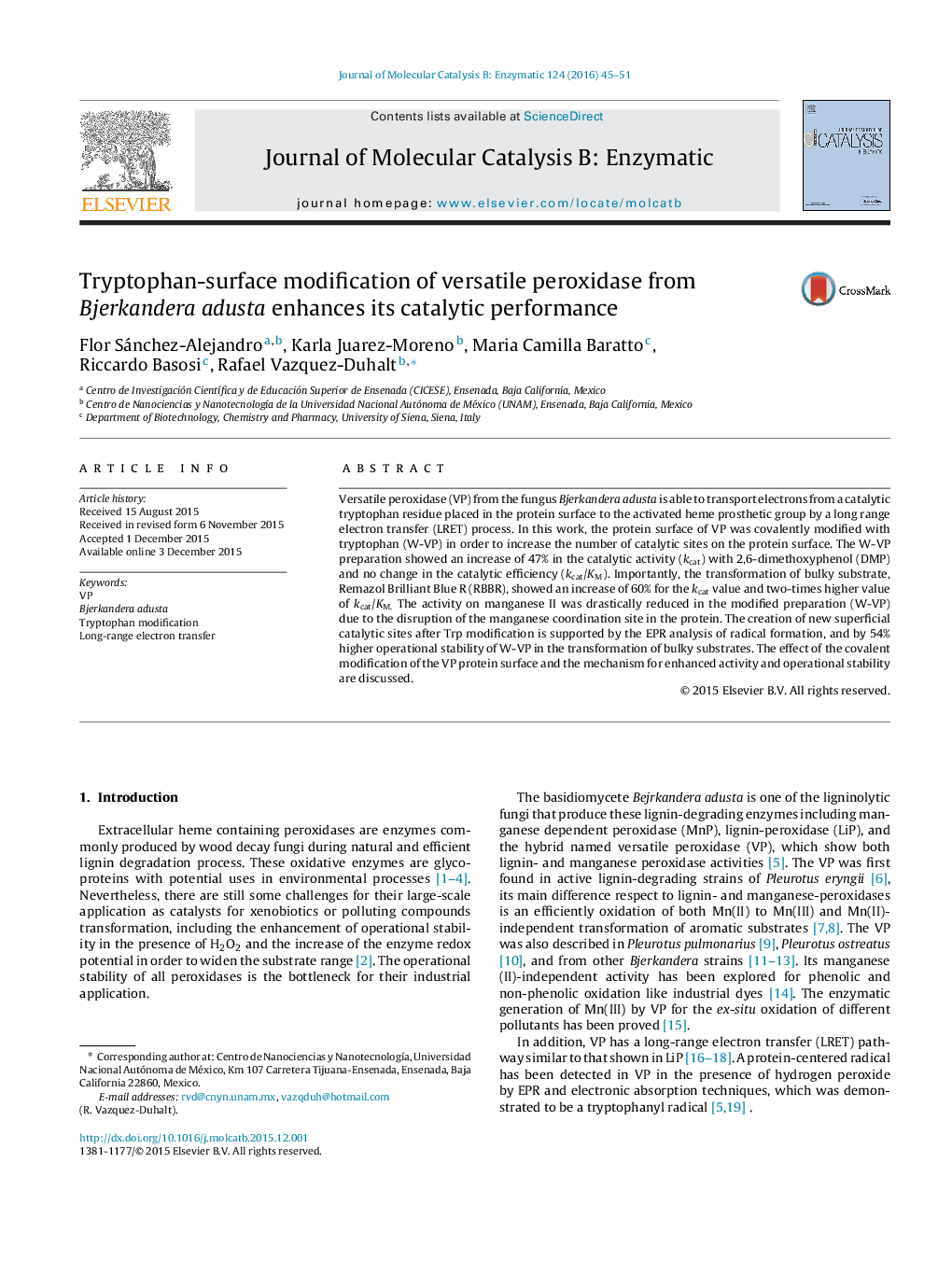| Article ID | Journal | Published Year | Pages | File Type |
|---|---|---|---|---|
| 69507 | Journal of Molecular Catalysis B: Enzymatic | 2016 | 7 Pages |
•Protein surface of versatile peroxidase was modified with tryptophan.•After chemical modification the catalytic performance of enzyme is improved.•The surface modification increases the catalytic activity for bulky substrates.•Tryptophan covering form a new long-range electron transfer pathway.
Versatile peroxidase (VP) from the fungus Bjerkandera adusta is able to transport electrons from a catalytic tryptophan residue placed in the protein surface to the activated heme prosthetic group by a long range electron transfer (LRET) process. In this work, the protein surface of VP was covalently modified with tryptophan (W-VP) in order to increase the number of catalytic sites on the protein surface. The W-VP preparation showed an increase of 47% in the catalytic activity (kcat) with 2,6-dimethoxyphenol (DMP) and no change in the catalytic efficiency (kcat/KM). Importantly, the transformation of bulky substrate, Remazol Brilliant Blue R (RBBR), showed an increase of 60% for the kcat value and two-times higher value of kcat/KM. The activity on manganese II was drastically reduced in the modified preparation (W-VP) due to the disruption of the manganese coordination site in the protein. The creation of new superficial catalytic sites after Trp modification is supported by the EPR analysis of radical formation, and by 54% higher operational stability of W-VP in the transformation of bulky substrates. The effect of the covalent modification of the VP protein surface and the mechanism for enhanced activity and operational stability are discussed.
Graphical abstractFigure optionsDownload full-size imageDownload as PowerPoint slide
